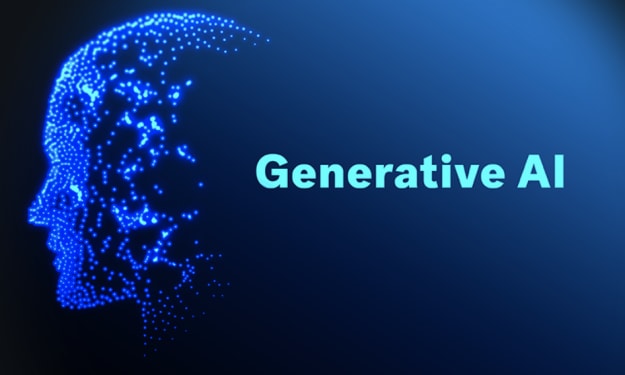What is remotes?
Know everything about remote

I. Introduction
Remote refers to the ability to perform a task or access a service from a location that is separate from the location where the task or service is performed. Remote work, remote technology, remote education, and remote healthcare are examples of how remote technology is used in various industries.
A brief history of remote:
The concept of remote has its roots in the telegraph and telephone, which were developed in the 19th century and allowed for communication over long distances. The development of computers and the internet in the 20th century further expanded the possibilities of remote work and remote access to information. In recent years, the COVID-19 pandemic has accelerated the adoption of remote work and remote learning.
Types of remote:
There are many different types of remote, each with their own unique characteristics and applications. Some examples include:
Remote work, which allows employees to work from a location separate from their office
Remote access, which allows users to access and control devices from a remote location
Remote monitoring and management, which allows for the monitoring and management of systems and devices from a remote location
Remote collaboration and communication, which allows for teamwork and communication from different locations
Online and distance learning, which allows students to access education remotely
Telemedicine and virtual consultations, which allows for medical consultations and treatment remotely
II. Remote in the workplace
Remote work refers to the ability to perform work tasks from a location separate from the office. In recent years, there has been a significant increase in the adoption and usage of remote work.
Adoption and usage of remote work:
Many companies have implemented remote work policies in response to the COVID-19 pandemic and as a result, remote work has become more prevalent. Remote work has also been on the rise in recent years, as technology has made it easier to work from anywhere.
Impact on productivity and employee satisfaction:
Remote work has been found to increase productivity and employee satisfaction, as it allows for more flexibility and autonomy. However, remote work can also lead to feelings of isolation and difficulty in maintaining work-life balance.
Challenges and solutions for remote work:
Remote work can also present challenges, such as communication and collaboration difficulties, lack of in-person interaction, and difficulty in maintaining work-life balance. Solutions to these challenges include implementing clear communication channels, setting up regular virtual meetings, and encouraging breaks and disconnection.
III. Remote in technology
Remote technology refers to the ability to access and control devices and systems from a remote location.
Remote access and control of devices:
With remote access and control of devices, users can access and control devices such as computers, servers, and security systems from a remote location. This allows for greater flexibility and convenience, as well as the ability to troubleshoot and fix problems remotely.
Remote monitoring and management:
Remote monitoring and management allows for the monitoring and management of systems and devices from a remote location. This can include monitoring the performance and status of systems and devices, as well as making changes and updates remotely.
Remote collaboration and communication tools:
Remote collaboration and communication tools allow for teamwork and communication from different locations. These tools include video conferencing, chat, and file sharing platforms.
IV. Remote in education
Remote education refers to the ability to access education remotely, through online or distance learning.
Online and distance learning:
Online and distance learning allow students to access education remotely, through online courses and programs. This can include live and pre-recorded lectures, online discussions, and virtual labs.
IV. Remote in education
Remote education refers to the ability to access education remotely, through online or distance learning.
Online and distance learning:
Online and distance learning allow students to access education remotely, through online courses and programs. This can include live and pre-recorded lectures, online discussions, and virtual labs.
Advantages and disadvantages of remote education:
Remote education has many advantages, including increased flexibility and convenience for students, as well as the ability to access education from anywhere. However, remote education also has its disadvantages, such as lack of in-person interaction and difficulty in maintaining engagement and motivation.
Impact of remote education on students and teachers:
Remote education has had a significant impact on both students and teachers. For students, remote education has increased access to education, but it has also led to increased stress and isolation. For teachers, remote education has required a significant shift in teaching methods and has increased workload.
V. Remote in healthcare
Remote healthcare refers to the ability to access medical care remotely, through telemedicine and virtual consultations.
Telemedicine and virtual consultations:
Telemedicine and virtual consultations allow patients to access medical care remotely, through video conferencing and other technologies. This can include virtual consultations, remote monitoring, and virtual follow-up visits.
Remote monitoring and remote care:
Remote monitoring and remote care allow for the monitoring and management of patients' health from a remote location. This can include the use of wearable devices and other technologies to monitor patients' vital signs and send alerts if there are any concerns.
Impact of remote healthcare on patients and providers:
Remote healthcare has had a significant impact on both patients and providers. For patients, remote healthcare has increased access to care and has made it more convenient and affordable. For providers, remote healthcare has increased workload and has required a shift in the way care is delivered.
VI. Conclusion
In conclusion, remote technology has had a significant impact on various industries and fields, including the workplace, technology, education, and healthcare. Remote work, remote technology, remote education, and remote healthcare have many advantages and also some disadvantages. Remote technology has also presented challenges and there are solutions that can be implemented to overcome these challenges. The future of remote in various industries and fields is uncertain, but it will likely continue to evolve in response to changing technologies and viewer preferences. Remote technology has the potential to revolutionize the way we work, learn, and access healthcare.





Comments
There are no comments for this story
Be the first to respond and start the conversation.